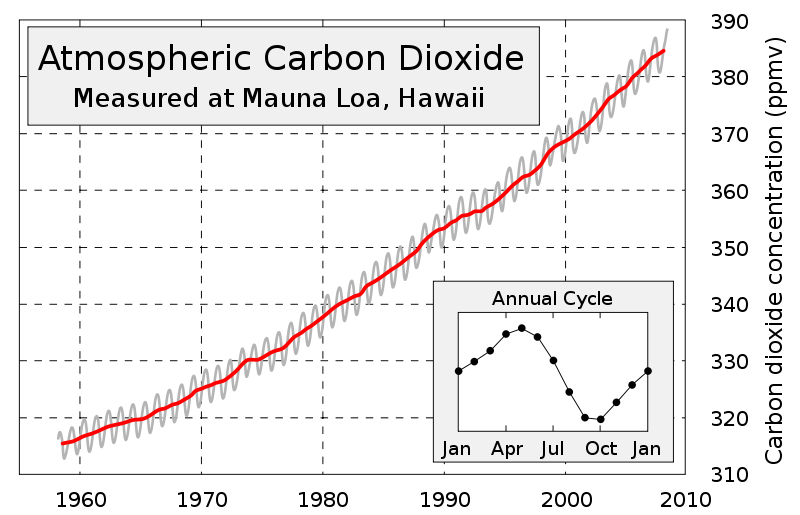The Changing Carbon Cycle
Today, the carbon cycle is changing. Humans are moving more carbon into the atmosphere from other parts of the Earth system. More carbon is moving to the atmosphere when fossil fuels, like coal and oil, are burned. More carbon is moving to the atmosphere as humans get rid of forests by burning the trees. Burning wood releases carbon into the atmosphere that had been stored in the tree.
Most of the carbon in the atmosphere is in molecules of carbon dioxide (CO2). Carbon dioxide is a greenhouse gas; it causes heat to be retained in the atmosphere. By increasing the amount of this greenhouse gas in the atmosphere, Earth is becoming warmer.
Carbon dioxide spends a long time, up to many centuries, in the atmosphere, so even if people stopped adding carbon dioxide to the atmosphere now Earth would continue to warm. The carbon can slowly move back into the biosphere, taken up by plants as they photosynthesize. It can also move into the oceans. And it can be stored in rocks of the geosphere like limestone. Researchers are currently studying these processes and others that move carbon out of the atmosphere.
The carbon cycle has changed throughout the billions of years of Earth’s history. However, prehistoric changes happened for different reasons. The amount of carbon dioxide in Earth’s atmosphere increased at times in the past, during the Devonian period of the Paleozoic for example, because of volcanic eruptions. Volcanoes release more than lava and ash. They also send gases, like carbon dioxide into the atmosphere. Today the amount of volcanic eruptions is very small compared with other times in the past, yet the concentration of carbon dioxide in the atmosphere is quite high because people are burning forests and fossil fuels.
The graph below shows how the concentration of carbon dioxide in the atmosphere has increased over time. These measurements were made at Mauna Loa in Hawaii, where the atmosphere is well mixed as air blows across the Pacific. Measurements have been made at other sites around the world too, but the longest record we have is from Hawaii. Dr. Charles Keeling started making the monthly measurements (grey line) in 1958. The graph is known as the Keeling curve in his honor. The annual fluctuation in carbon dioxide is caused by seasonal change in the amount of carbon dioxide taken up by plants on land in the Northern Hemisphere.

Image: NOAA data, graphed by the Global Warming Art Project